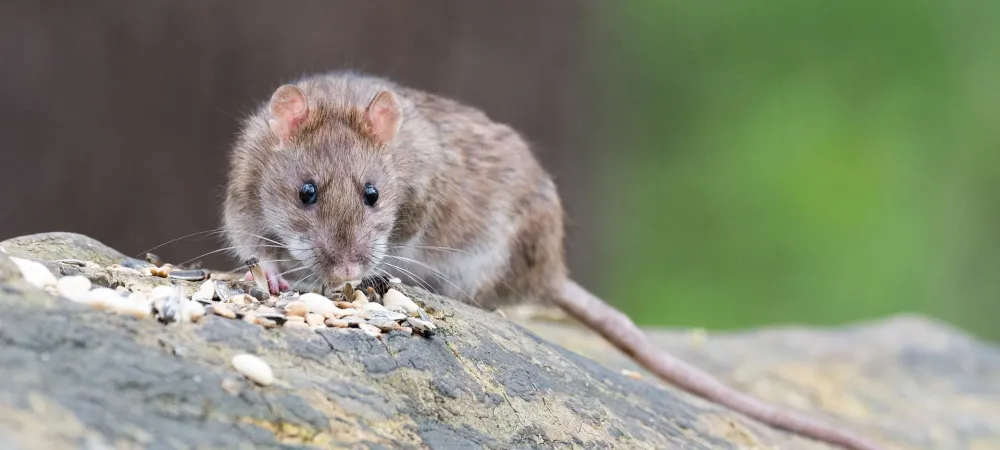A Complete Guide to Rodents in Texas in 2025

Nearly everyone deals with mice and rats at some point in their lives—these common pests can be found all over the country and invade homes large and small. Rodents can carry and spread disease, damage your home, ruin food supplies, and leave disgusting droppings in their wake. They also reproduce at record speeds, and one rat or mouse usually means an entire colony has taken up residence in your attic, walls, or shed. In order to best protect your house, you should know the types of rodents, the ways they enter homes, and how to get rid of them—or when to call professionals to do it for you.
Navigation:
Types of Rodents in Texas
House Mice
The house mouse rarely survives far from human settlements, so it’s not surprising to find them in your home. Pet mice and lab mice are descended from this type of rodent, but they are no Mickey Mouse. House mice can be 6-8 inches long and usually weigh less than an ounce. They are mostly nocturnal, and they build nests out of soft materials near food sources. Each female can have 5-10 litters of pups per year, so these mice can reproduce rapidly.
Deer Mice
Deer mice are one of the only common rodents that are actually native to North America. Like their name suggests, deer mice are more common to outdoor areas, especially rural ones—but that doesn’t mean they can’t find their way inside your house to build a nest. A deer mouse can be 6-7 inches long and weigh less than an ounce—very similar in size to a house mouse, but you can tell a deer mouse by its multicolored tail and white underside. They are burrowers and tend to be nocturnal, so if you hear scrambling under the floorboards at night, deer mice might be the culprit.
Norway Rat
The “Norway rat” is a misnomer—although these rats didn’t originate in Norway, a 1769 book gave them the name and it stuck. As one of the most common kinds of rat throughout the U.S. and other continents, they’re known for populating New York City subways as often as suburban homes. Though not native to the U.S., Norway rats traveled to Texas and have been invading homes ever since, especially in Northern Texas. They can grow up to 17 inches (including tail length) and weigh twice as much as a house mouse. They’re also prolific breeders—a female rat can have up to 5 litters per year, with up to 14 pups per litter.
Roof Rats
Roof rats have found their way to all parts of Texas, just like Norway rats. As you might guess, roof rats are attracted to the high parts of buildings and homes, like the attics, rafters, and roofs. They are shorter, slimmer, and less prolific breeders than Norway rats, but can still wreak plenty of havoc. You may hear these rodents in the walls or attic, so look for droppings in these spaces when trying to determine whether you have them.
How Do Rodents Get Into Your Home
Small rodents, such as the house mouse, can squeeze through a hole the size of a dime. It is very difficult to find and plug every hole that small!
Common entry points for rodents are:
- Doorways and windows that don’t seal well or completely
- Sewer lines
- Pipes
- Gutters
- Cables
- Holes
Signs of a Rodent Infestation
The older your home is, the more likely it is to have a myriad of cracks, holes, and other points of entry you might not be aware of.
Signs of rodents in your home can include:
- Droppings.
- Chewed-through food containers.
- Scratching noises in walls and ceilings.
- The actual sighting of a mouse or rat.
How to Get Rid of Rodents in Your Home in 2025
The most important thing when trying to eliminate rodents on your own is to get rid of the food sources and entry points. Even if you manage to remove the current population of mice or rats in your house, more can enter if you don’t deal with the root cause.
The best way to get rid of rodents in your home are to:
- Properly seal and store all food.
- Keep your trash cans closed and sealed tight.
- Find and plug holes and cracks around windows, doors, and foundations with steel wool or concrete.
- Consider adding mesh to your downspout or other open pipes and tubes.
- Seal the openings around gas lines, dryer vents, etc.
Additionally, there are a few DIY rodent control solutions you can try, such as:
- Mouse traps with or without bait. These vary in type, from the classic snap trap (think Tom & Jerry) to glue traps.
- Live traps are the humane way to go, but require you to remove the rodent yourself.
Do mouse traps actually work?
It’s important to note that using traps and bait correctly requires extensive, intimate knowledge of rodents and the type and behavior of the mice and rats you’re dealing with. Used improperly, these traps can be dangerous, especially if you have pets or small children in the house.
Trust Your Local Rodent Control Exterminators
Myles Pest Services’ rat and mice exterminators have more than 36 years of experience dealing with all kinds of pests. Our friendly, professional staff can create a plan customized to your home and situation in order to remove rodents as quickly as possible and restore your home to cleanliness and safety.
Our rodent control services do more than just get rid of your rodents: we offer continuing treatment and prevention to keep mice and rats from returning to your home. Our services are budget-friendly and our technicians are highly-trained customer service professionals.
If you’re in the North Texas area and need rodent removal, call Myles Pest Services at 817-835-9005 for fast, effective, guaranteed rodent removal.

